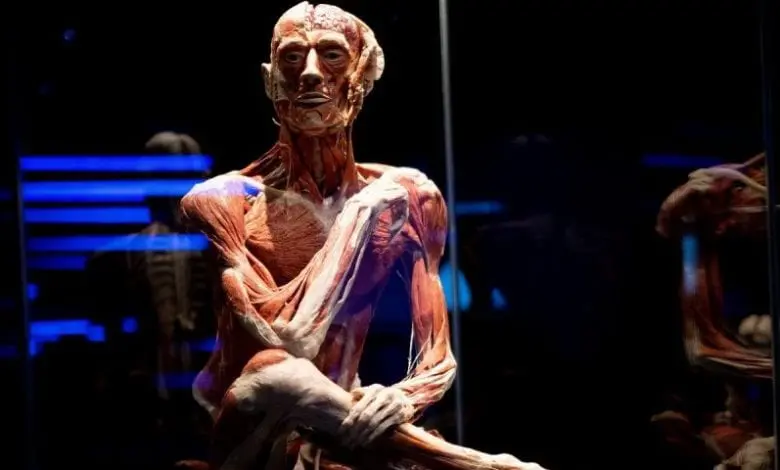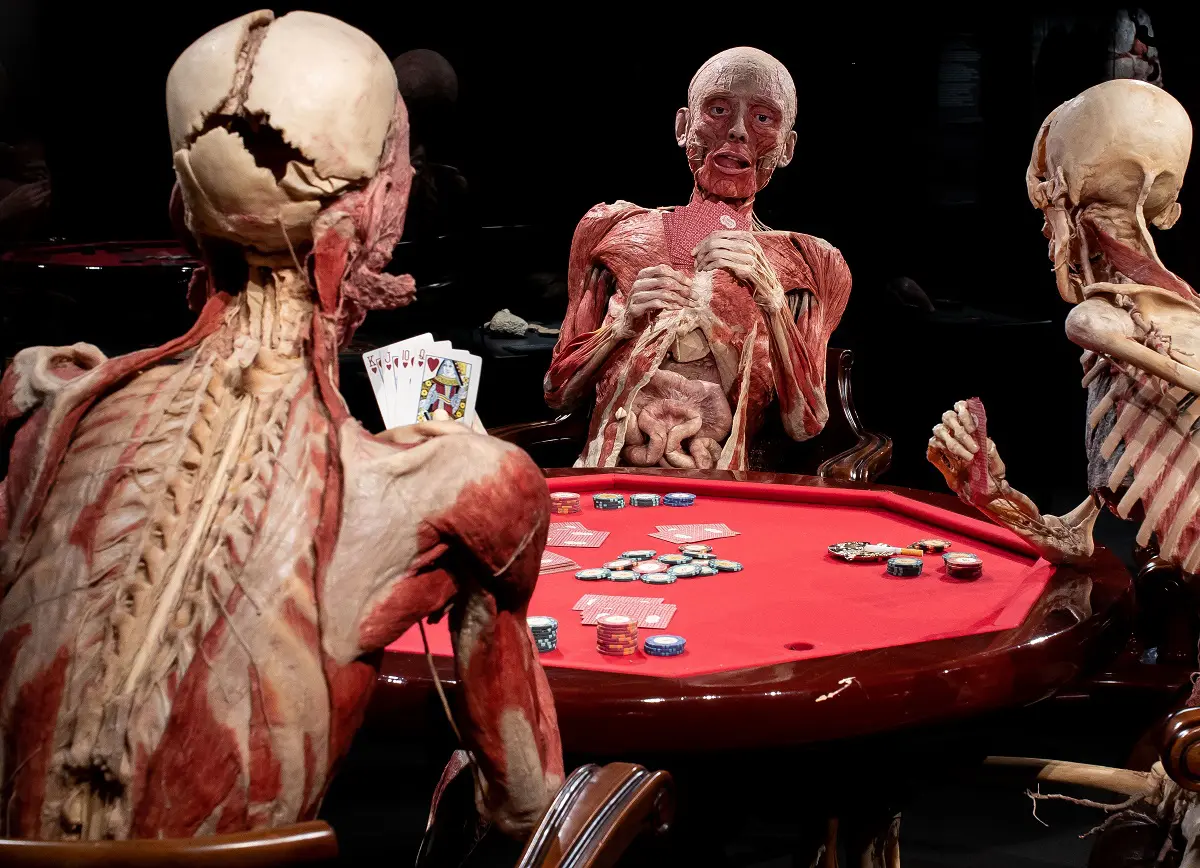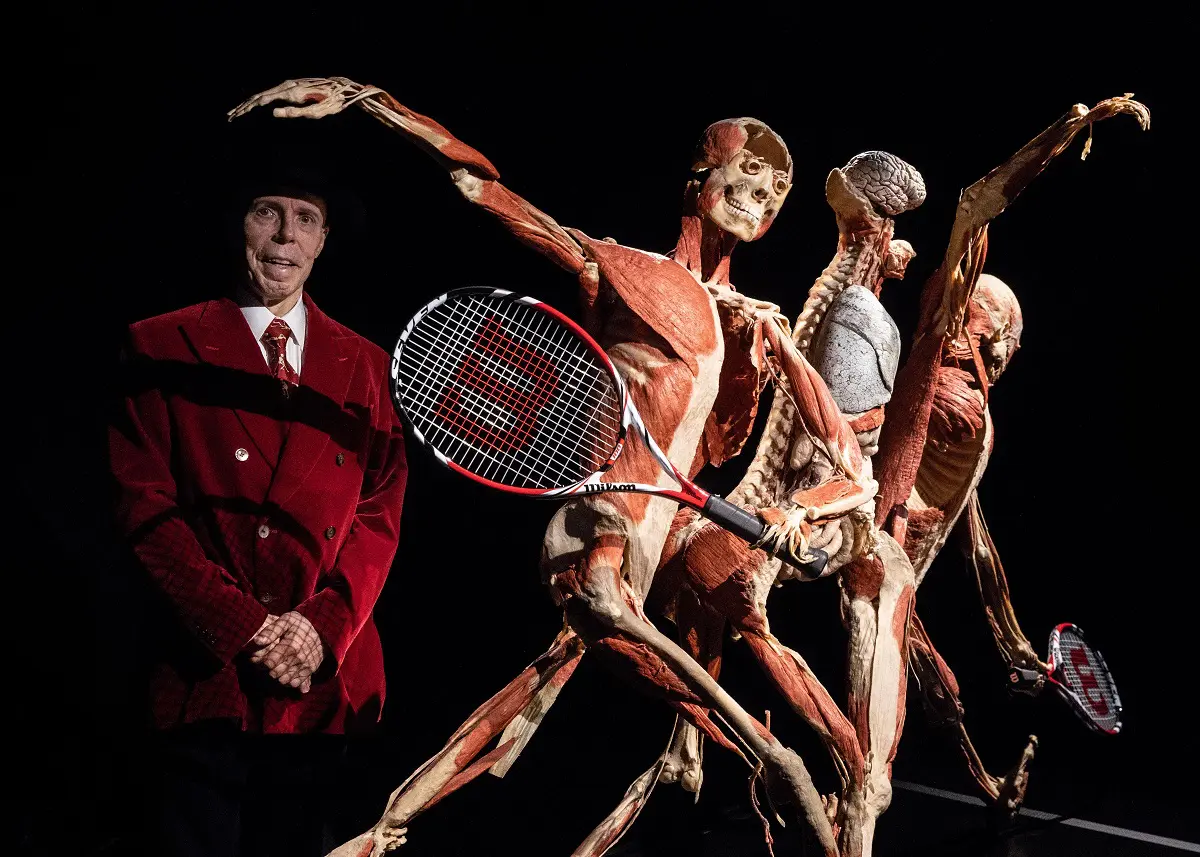Body Worlds: Coming face to face with death

Register to get 1 free article
Reveal the article below by registering for our email newsletter.
Want unlimited access? View Plans
Already have an account? Sign in
The grandiose buildings that surround Piccadilly Circus have played host to a wide variety of weird and wonderful exhibitions and museums from Ripley’s Believe It or Not to displays of the work of Banksy. German anatomist, Gunther von Hagens and his Body Worlds exhibition are hoping to top the lot however. In short, the Body Worlds exhibition aims to educate visitors on how their body works through the display of human bodies and body parts. On the surface the idea seems controversial and morbid, with many of the general public having never seen a dead body, let alone one which has been autopsied in a manner which gives a ‘cutaway’ impression revealing all insides. The location of von Hagen’s first permanent exhibition also raises a few eyebrows, London is the capital of a country which is famously nervous at talking about and dealing with death, tube adverts aimed at breaking down death taboos displayed on the London Underground were banned last year as they were deemed “likely to cause offence”. Exhibition founder, von Hagens, is best known for inventing the plastination technique which means human bodies can be preserved following someone’s death, which is how the exhibition’s displays stay in the same form they died and do not decay.

Upon arrival at Body Worlds, visitors are directed into a dark lift and instructed to take it to the fifth floor, once there a giant screen depicting the acceleration of everyday life, showing that the body is simply not built to keep up. Just around the corner guests come face to face with their first plastination, this particular one happens to be the first publicly autopsied body for 200 years, after von Hagens performed the autopsy in front of a live audience in London and in front of an even larger television audience on Channel 4. After seeing the first plastination, worries and fears of walking around an exhibition of dead bodies are quickly quelled by the effect of plastination, which makes the bodies look similar to the plastic dummies used in biology classes. Moving further through the exhibition, crowds see body parts which have been separated from the body which also sounds gory at first, however in the sci-fi laboratory surroundings of the exhibition, the displays show what a contribution to education their donors have made. The exhibition covers every area and function of the human body, with a display showing the lung of a non-smoker and the lung of a smoker particularly hard hitting. Particularly noticeable is the lack of smell in the exhibition, which is perhaps to be expected with masses of bodies; but the plastination process leaves the exhibits completely odorless and the bodies will never decay.

During the walk around the exhibition, taboos around death and fears surrounding viewing a significant number of bodies are defused. Visitors no longer see the plastinations as actual human beings once they have seen the first few and through the displays, the assembled are able to learn about life and death in a way which totally removes emotion and simply teaches the facts. Many of the latter parts of the exhibition deal with the subject of death head on and the final display mixes both birth and death together in an attempt to show death as the main reason for living. The exhibition is interactive all the way round giving visitors the chance to perform a number of medical check ups on themselves, the final piece of interaction for visitors stands out however, a giant chalkboard with the instruction to write one thing that visitors would like to do before they die.
Von Hagens’ plastination technique begins with the sourcing of bodies on Body Worlds’ website, the site features a simple form which can be filled out by would-be donors in order to begin the process. So far 18,387 people have signed up to be plastinated by von Hagens, with the majority of the bodies being used for medical science (the technique’s original purpose) rather than going on show, as many as 16,299 of the donors hail from von Hagens’ homeland of Germany. Body Worlds says the donors “selfless” donations allow them to “gain unique insights into the human body, which had previously been reserved for physicians”. Once a donor has died, the process begins with embalming, where decomposition is stopped using formaldehyde. Once decomposition has been stopped the bodies are sliced into 3.5mm sections while frozen, and dissected into the chosen pose using forceps and scalpels. Once the bodies are frozen and posed correctly, bodily fluid is replaced with acetone in a cold acetone bath. Soluble fat molecules are also removed using warm acetone from a warm acetone bath. The next step in the plastination process sees the acetone extracted and gradually replaced with plastic, during this step each structure is brought in to its proper position and slices of tissue are laid between sheets of film and/or glass plates. The bodies are then gas cured and heat cured, before being infused with silicon rubber and epoxy resin, turning the specimens from liquid plastic to solid plastic.
The technique was invented by von Hagens in the late 1970s, originally for medical research into the kidneys, the methods were then quickly adopted in research into other ailments and bodily functions, before the potential for display was realised. Von Hagens and those working alongside him thought that the general public could learn from the plastinations and set about putting together the exhibition. Plastinated specimens were publicly displayed for the first time at the National Science Museum in Tokyo, with more than 450,000 visitors attending in only four months. Two years later, von Hagens’ creations went on show in Germany for the first time, unlike in Japan, the displays were greeted with controversy over where bodies had come from. In 2008, the technique was developed further to allow for the colouration of the plastinations, meaning that distinctions could be made between various body tissues so plastinations could be used to teach students and exhibition visitors more thoroughly than before. On what the future holds for Body Worlds, a spokesperson for the exhibition says it will continue to tour around the world. While the London site remains its only permanent exhibition for the time being, the spokesperson refuses to rule out the addition of more with an open ended response of: “maybe in the future”.
This feature originally appeared in the February 2019 issue of Funeral Service Times







